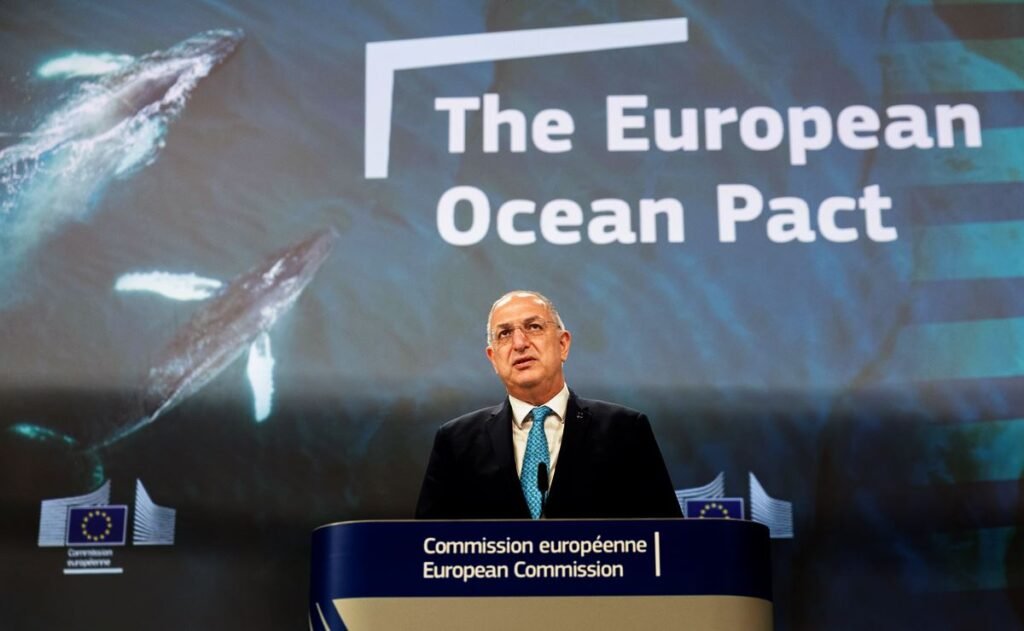The EU Commission has adopted a European Ocean Pact strategy to better protect the ocean, promote a thriving blue economy and support the well-being of people living in coastal areas.

The Pact brings together EU ocean policies under one single reference framework, addressing the significant threats facing our ocean, our coastal communities, islands and outermost regions.
To protect and restore ocean health, the Commission will support Member States restoring degraded coastal and marine habitats. Key actions include encouraging Member States to establish and manage marine protected areas and revise the Maritime Strategy Framework Directive and the Maritime Spatial Planning Directive.
A new Industrial Maritime Strategy and an EU Ports Strategy will be set up to boost the competitiveness of the EU sustainable blue economy. It will also evaluate and possibly revise the Common Fisheries Policy. The Commission will present a long-term vision for the EU fisheries and aquaculture sectors in 2026.
The Commission will present a dedicated strategy for the development and resilience of EU coastal communities and consult stakeholders on a new strategy for islands as well as an updated outermost regions strategy. The EU executive will also make a proposal on the creation of European blue carbon reserves.
The Ocean Pact proposes an EU Ocean Observation Initiative to improve knowledge of the ocean. It will be underpinned by an Ocean Research and Innovation Strategy and feed the European Digital Twin of the Ocean. It will maintain the EU as a global ocean leader in ocean science, technology and data.
The Commission will strengthen EU coast guard and naval cooperation and maritime border security. There will be a coordinated strategy to remove unexploded ordnance from European waters, starting in the Baltic and North Seas. Investment will be made in a pioneering European drone fleet, leveraging technologies such as artificial intelligence and advanced sensors for real-time monitoring of maritime activities, strengthening the EU’s maritime surveillance capabilities.
The Commission will also step up its fight against illegal, unreported and unregulated fishing through the mandatory implementation of IT CATCH, the digitalisation of the IUU catch certification scheme, as of January 2026. The Commission will also strengthen European ocean diplomacy to promote the EU’s ocean goals and interests on the international stage. The Commission will focus on priorities such as the swift worldwide ratification and implementation of the Biodiversity Beyond National Jurisdiction Agreement, an ambitious Plastics Treaty and the designation of three vast marine protected areas in the Southern Ocean.
To achieve the Ocean Pact’s targets, the Commission will present an Ocean Act by 2027. This Pact will establish a single framework to facilitate the implementation of the Pact’s key objectives, while cutting red tape. It will be based on a revised Maritime Spatial Planning Directive, which will enhance cross-sectoral coordination and sea basin management.
The Commission will also set up a high-level Ocean Board, bringing together representatives from various ocean-related sectors, to guide the Ocean Pact’s implementation, and launch an EU Ocean Pact dashboard, providing a public, transparent and centralised platform to track progress towards its objectives.
“The European Ocean Pact is not a message in a bottle – it’s a concrete plan for action,” said Fisheries Commissioner Costas Kadis: “We will work tirelessly to implement its priorities and ensure that the new governance approach to our ocean policies guide our work in the years to come, promoting healthy fisheries, a competitive blue economy, thriving coastal communities, and are mirrored in our engagement at the international level.”
Questions and answers on the European Ocean Pact